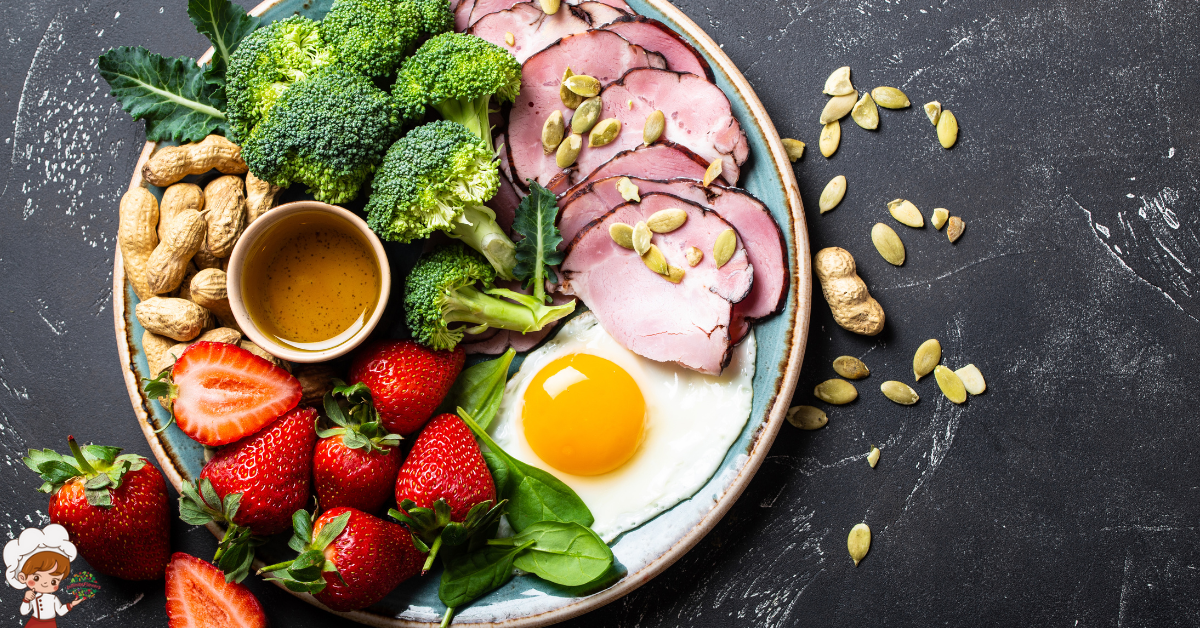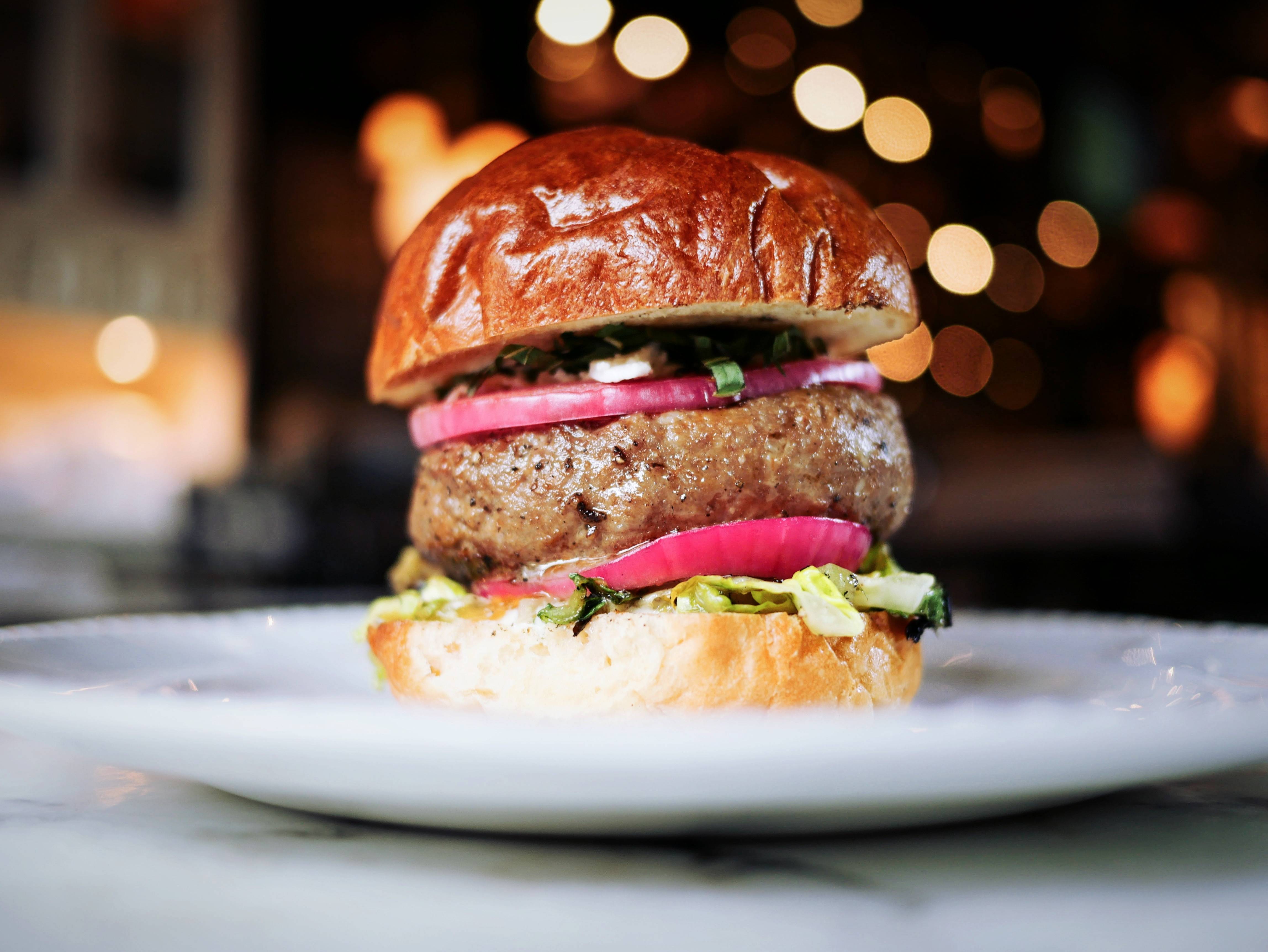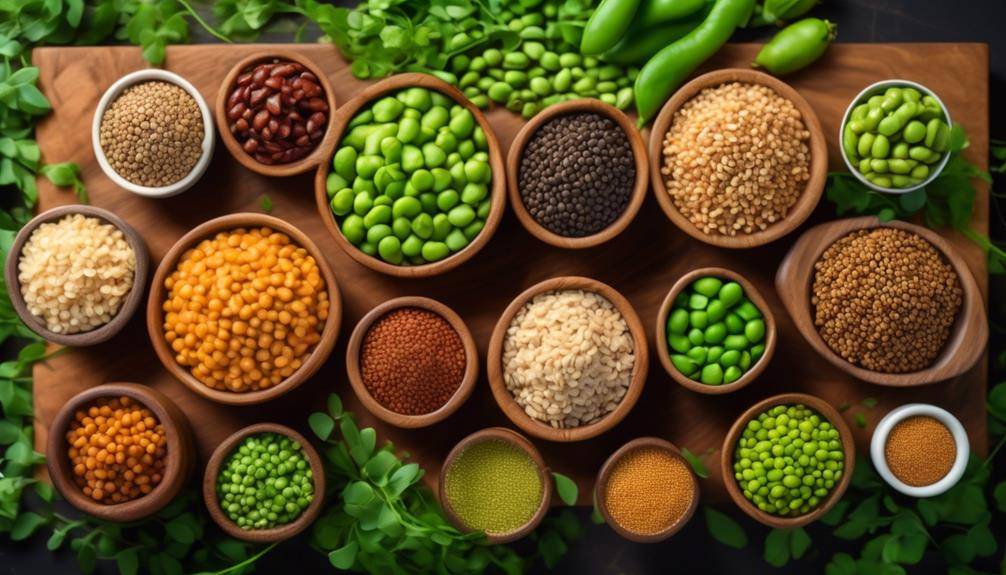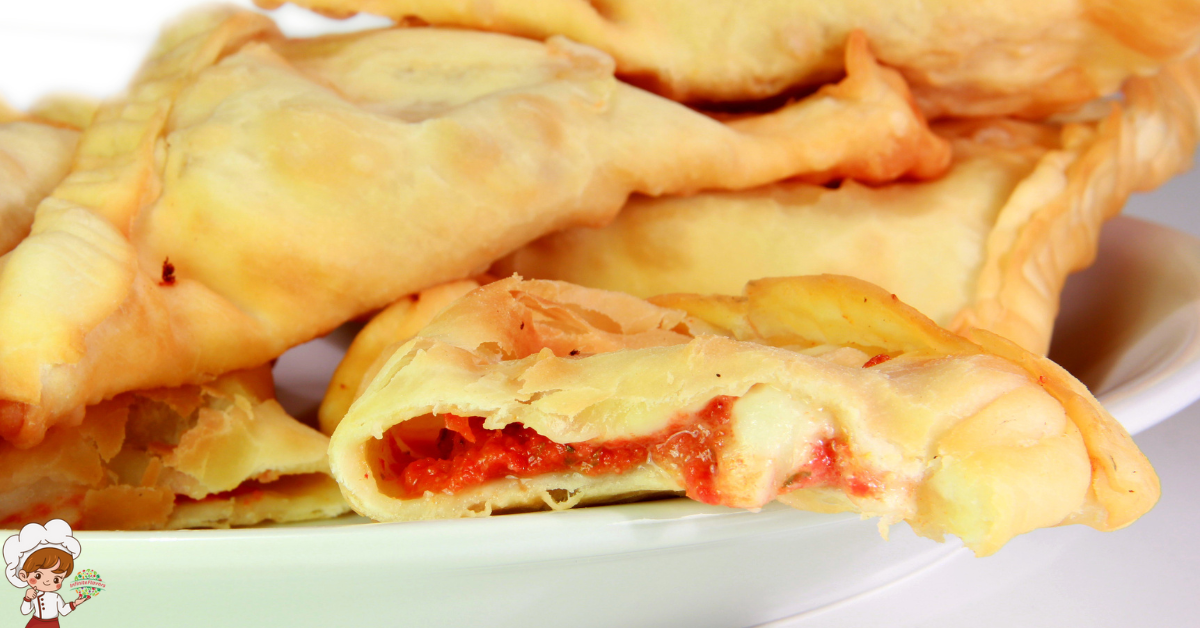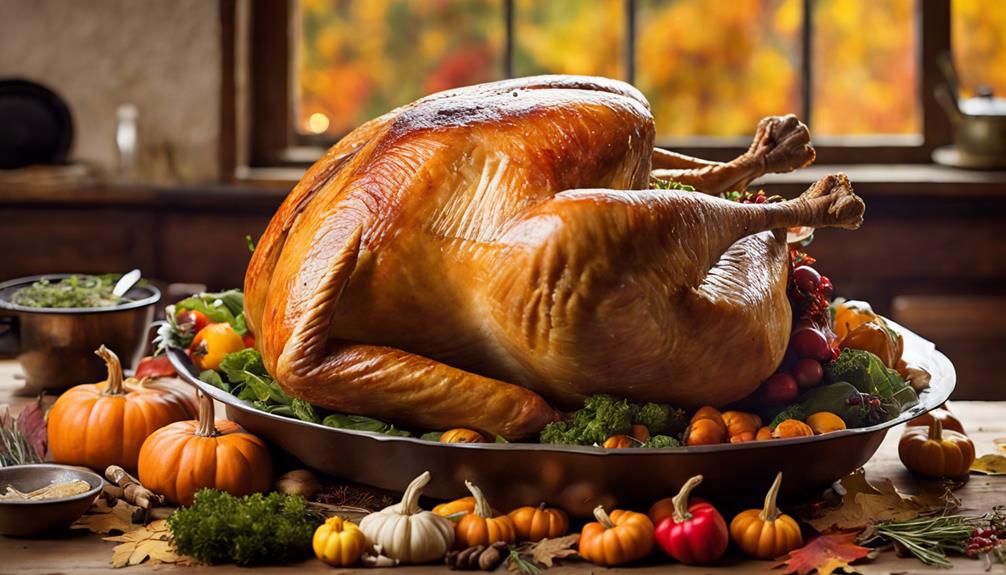History Of The FlambeCooking Technique
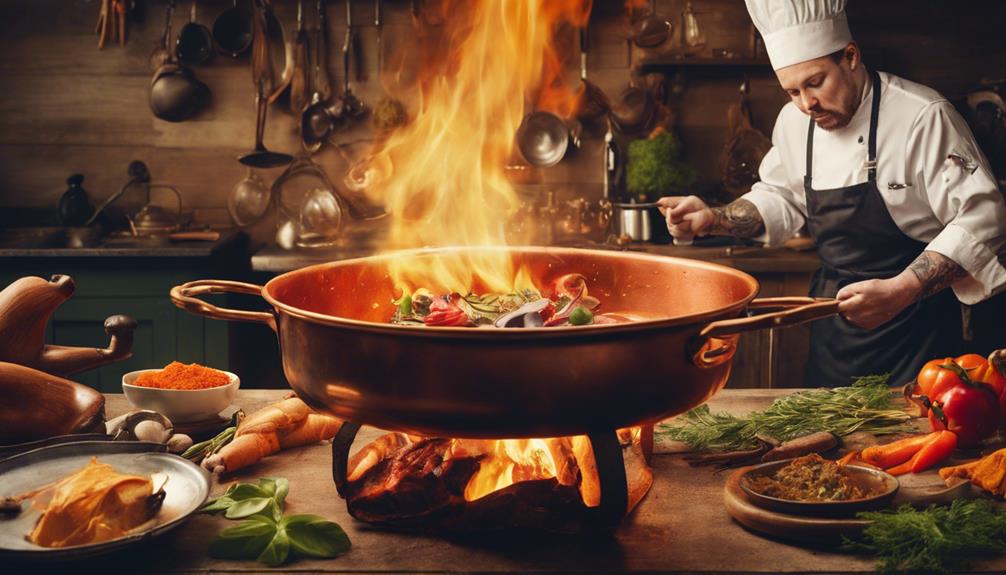
History Of The FlambeCooking Technique; Flambé cooking has a fascinating history that dates back to ancient civilizations in Europe and beyond. You’ll find its roots in cultures that used fire and alcohol, like the Romans who ignited wine-soaked dishes for added flavor. The technique became prominent in French cuisine in the 19th century, showcasing dramatic dishes such as Coq au Vin and Crêpes Suzette. Flambé not only enhances taste but also offers a visually stunning dining experience. This method has evolved over time, adapting to various cuisines and traditions worldwide. If you’re curious about its enduring allure and modern applications, there’s much more to explore.
Origins of Flambé Cooking
Flambé cooking has its roots in the culinary traditions of Europe, particularly in France, where the technique began to gain popularity in the 19th century. As you investigate flambé history, you’ll find that the dramatic presentation of igniting spirits in dishes not only enhances flavor but also adds a theatrical flair to dining. Chefs started experimenting with various cooking techniques, using alcohol to deglaze pans, which created a unique method for intensifying flavors while showcasing their skills.
At its core, flambé involves adding liquor to a hot dish and igniting it to create a burst of flames. This method caramelizes sugars and develops complex flavors, making it an enticing choice for many recipes, including desserts like Crêpes Suzette and savory dishes like Beef Stroganoff. You might be surprised to learn that the technique also serves a practical purpose—flambéing can reduce the harshness of alcohol, leaving behind the essence without overwhelming your palate.
As you explore the origins of flambé cooking, remember that its roots are deeply intertwined with the evolution of French cuisine. It reflects a growing interest in innovative cooking techniques during a time when chefs sought to elevate their culinary art. Today, you can still find flambé dishes on restaurant menus, proving that this intriguing technique has stood the test of time, inviting you to savor the excitement it brings to your culinary experiences.
Early Uses in Ancient Cultures
Throughout history, various ancient cultures have experimented with fire and alcohol in cooking, laying the groundwork for techniques similar to flambé. You might find it fascinating that ancient civilizations often used fire not just for warmth but as a crucial component in their cooking rituals. The use of alcohol, typically from fermented grains or fruits, became an integral part of their food preparation, especially during cooking celebrations.
In ancient Rome, for instance, you’d discover that chefs sometimes ignited wine-soaked dishes to enhance flavors and create dramatic presentations for their guests. This practice wasn’t merely about taste; it was also a visual spectacle that added excitement to communal feasts. Similarly, in ancient Greece, cooking celebrations often included the use of flaming dishes as part of their festive rituals, symbolizing abundance and joy.
You’d also see evidence of these practices in Asia, where cultures utilized rice wine to flambé meats and vegetables, creating a unique blend of flavors while showcasing their culinary skills. These ancient rituals connected food and fire, celebrating life’s moments and bringing communities together.
As you explore the rich tapestry of these practices, it’s clear that the early uses of fire and alcohol in cooking laid the foundation for flambé techniques we see today. These ancient cultures not only contributed to the evolution of culinary arts but also enriched communal experiences through their cooking celebrations, highlighting the enduring connection between food, fire, and festivity.
Flambé in French Cuisine
French cuisine’s artistry shines brightly in its use of flambé techniques, transforming simple dishes into extraordinary culinary experiences. When you step into a French kitchen, you’ll likely witness the thrilling spectacle of flames dancing over a dish, adding not just flavor but an element of drama to your meal. Flambé presentations are not just about show; they enhance the overall dining experience by creating a unique flavor profile and aroma that captivates the senses.
You might find flambé techniques in various traditional recipes, like Coq au Vin or Duck à l’Orange. These dishes often involve cooking meat with a splash of alcohol, igniting it to produce a rich, smoky flavor. The technique requires precision and confidence, as you’ll need to control the flames while ensuring the ingredients meld perfectly.
As you explore French cuisine, you’ll notice that flambé isn’t limited to savory dishes. Desserts like Crêpes Suzette demonstrate the technique’s versatility, where the flambé process infuses the crepes with citrusy flavors and a hint of excitement. The visual impact of the flames can elevate any meal, making it memorable for both the diner and the chef.
Incorporating flambé techniques into your cooking not only enhances flavors but also brings a sense of theatricality to your culinary repertoire. It’s an art form that celebrates both skill and creativity, inviting you to experiment and delight in the magic of fire in the kitchen.
The Role of Alcohol
How does alcohol elevate the flambé cooking technique? When you use alcohol in flambé, you’re not just adding a fiery spectacle; you’re also enhancing the dish’s overall flavor profile. Different alcohol types, like brandy, rum, or whiskey, bring unique notes to the table, allowing you to tailor the dish to your taste preferences. For instance, using a fruity liqueur can add sweetness, while a richer spirit like bourbon contributes depth and warmth.
The magic happens when you ignite the alcohol. As it burns, the flames consume the alcohol quickly, leaving behind the flavors while the harshness evaporates. This process results in a delicate balance, where the remaining flavors meld beautifully with the other ingredients in the dish. You’ll notice that the flambé technique doesn’t just create a dramatic presentation; it also enhances the aromatic quality of the meal, making it even more enticing.
Incorporating alcohol types that complement your dish is essential. For example, using sherry with seafood or a dark rum with savory meats can elevate the overall experience. The flavor enhancement achieved through flambéing is often the secret behind many gourmet dishes, lifting them from ordinary to extraordinary. So next time you’re in the kitchen, don’t shy away from reaching for that bottle. Embrace the role of alcohol in your flambé, and watch how it transforms your culinary creations.
Techniques and Methods
When you’re ready to try flambe, you’ll need to gather some essential equipment to guarantee a smooth experience. Understanding the step-by-step process is key, along with knowing the safety precautions to keep in mind. Let’s break down what you need to know for successful flambe cooking.
Essential Equipment Required
To successfully execute the flambé cooking technique, you’ll need a few vital pieces of equipment that can enhance both safety and effectiveness. First and foremost, a sturdy sauté pan or skillet is imperative. Choose one that’s made from a material that can withstand high heat, like stainless steel or cast iron.
Next, you’ll want a long-handled lighter or a match to ignite the alcohol safely from a distance. This is where flambé equipment can help you maintain control while minimizing the risk of burns. A heat-resistant surface or a flameproof mat is also a smart addition to your kitchen setup, just in case any flames escape.
For your ingredients, you’ll need a high-proof alcohol, such as brandy or rum, as they ignite more readily. It’s important to have a measuring cup handy to pour the right amount. Finally, a fire extinguisher should always be within reach. It’s an important tool for any flambé enthusiast, ensuring that you’re prepared for any unforeseen flare-ups. With the right flambé equipment at your disposal, you’ll be ready to embrace the drama and flavor this technique offers!
Step-by-Step Process
Once you’ve gathered your flambé equipment, you’re ready to start the cooking process. Begin by preparing your ingredients and having them within reach. Choose a suitable dish, like sautéed mushrooms or a classic crepe Suzette, to showcase the flambé technique.
Heat your pan over medium-high heat, adding your chosen fat, such as butter or oil. Once it’s sizzling, introduce your ingredients and allow them to cook briefly. When they’re nearly done, it’s time for the exciting part: the flambé. Carefully pour in a high-proof alcohol, like brandy or rum, ensuring even coverage.
Now, for flambé safety—stand back and use a long-handled lighter or match to ignite the alcohol. Watch as the flames dance, enhancing the dish’s flavor while creating a dramatic presentation. Keep a lid nearby to smother any flames if needed.
Safety Precautions Involved
Flambéing can be thrilling, but it also comes with risks that need careful management. To guarantee flambé safety, you should always prepare your cooking area by removing any flammable materials, like paper towels or dishcloths, from your workspace. Keep a fire extinguisher within reach, and familiarize yourself with how to use it. Before you ignite the alcohol, make sure your pan is not too full, as excess liquid can lead to flare-ups.
When you’re ready to flambé, use a long-handled lighter or a long match to ignite the alcohol. Stand back, and be cautious of your clothing or hair catching fire. It’s a good idea to wear tight-fitting clothing and have long hair tied back. If you do experience an uncontrolled flame, don’t panic—simply cover the pan with a lid or a baking sheet to smother the fire, cutting off its oxygen supply.
After you’ve finished flambéing, let the pan cool down before washing it. Remember, the key to enjoying this dramatic cooking technique is to respect the fire while maintaining your safety. By following these precautions, you can safely experience the excitement of flambéing.
Flambé in Caribbean Cooking
Exuberance characterizes the flambé technique in Caribbean cooking, where the vibrant flavors of the islands come alive in a dazzling display of fire. You’ll find that flambéing enhances the rich, tropical ingredients and aromatic Caribbean spices, creating a culinary experience that’s both visually stunning and delicious. This technique isn’t just for show; it plays a vital role in flavor enhancement, allowing the spirits to infuse the dish with depth and complexity.
During festive gatherings, flambé dishes bring people together, becoming a focal point of celebration. Whether it’s a family reunion or a street festival, the fiery spectacle captures attention and elevates the dining experience. The Caribbean’s culinary fusion reflects the region’s diverse cultural influences, blending cooking techniques and ingredients from various traditions.
Regional variations in flambéing also add to its allure. Each island might incorporate unique spices or local ingredients, resulting in a delightful array of flavors and presentations. For instance, you might encounter a dish flambéed with rum, a nod to the islands’ rich rum-making history, or a seafood dish enhanced by local herbs and spices.
Cultural rituals often involve flambéing, making it a significant part of Caribbean heritage. As you embrace this technique, you’ll not only delight your taste buds but also honor the traditions that shape Caribbean cooking. So, when you flambé, you’re igniting a connection to the islands’ vibrant culinary history.
Popular Flambé Dishes
Caribbean cooking showcases an array of popular flambé dishes that highlight the technique’s vibrant flair and flavor enhancement. When you think of famous flambé recipes, dishes like Bananas Foster and Crêpes Suzette often come to mind, but the Caribbean offers its unique twists that’ll surely tantalize your taste buds.
One standout is Rum Flambé Pineapple, where fresh pineapple slices are sautéed in a mix of brown sugar, butter, and rum. Just as the mixture begins to bubble, a quick igniting creates an eye-catching blaze that caramelizes the sugar, adding depth and complexity to the dish. You can serve it over vanilla ice cream for a delightful contrast.
Another dish to try is the Flambé Shrimp, marinated in a blend of spices and then quickly cooked in a hot pan. A splash of rum ignites the shrimp, infusing it with the rich flavors of the Caribbean. This dish not only impresses with its taste but also with its dramatic presentation.
Using flambé cooking techniques allows you to elevate ordinary meals into extraordinary culinary experiences. Whether you’re cooking for guests or just treating yourself, these dishes allow you to embrace the excitement of fire in your kitchen. So, grab your favorite rum and get ready to explore the world of flambé cooking, making your meals unforgettable!
The Science Behind Flambé
The chemistry behind flambé cooking is both fascinating and crucial for achieving that signature burst of flavor and visual appeal. When you ignite alcohol, you’re not just creating a dramatic show; you’re engaging in a complex chemical reaction. The alcohol in your dish vaporizes quickly, allowing it to mix with oxygen in the air. This process creates a flame that can sear the dish while enhancing the flavors.
During flambé, the intense heat caramelizes sugars and browns proteins, transforming your ingredients. This is where flambé chemistry shines, breaking down complex compounds and releasing aromatic compounds that elevate your dish. You’ll notice how the flames don’t just add a visual spectacle; they also intensify the flavors, creating a richer, more complex taste profile.
Moreover, the quick cooking time helps preserve the freshness of your ingredients. Since the alcohol burns off rapidly, you’re left with deeper flavors without the overwhelming taste of alcohol itself. It’s a delicate balance that enhances the overall dining experience.
When you flambé, you’re fundamentally applying high heat in a short burst, which can also help in reducing sauces. This reduction process concentrates flavors, allowing them to meld beautifully. So, as you prepare to flambé, remember that you’re not just cooking; you’re engaging in a scientific process that transforms your dish, ensuring every bite is packed with flavor enhancement. Embrace the flambé chemistry, and watch how it elevates your culinary creations.
Safety Precautions
Flambé cooking can be an exhilarating experience, but it’s important to prioritize safety to avoid accidents. Before you ignite that dish, verify you’ve taken the necessary precautions. First and foremost, keep fire safety at the forefront of your mind. Always have a fire extinguisher nearby, and familiarize yourself with how to use it. In case of an emergency, don’t panic; instead, focus on putting out any flames safely.
Next, you’ll want to pay attention to kitchen ventilation. Good airflow is essential when flambéing, as it helps dissipate flammable fumes. Open windows or turn on exhaust fans to maintain a safe cooking environment. If your kitchen is well-ventilated, you’ll reduce the risk of flare-ups and improve your overall cooking experience.
When preparing to flambé, make sure to use a long-handled lighter or match to ignite the alcohol. This keeps your hands at a safe distance from the flame. Also, never add alcohol directly from the bottle into a hot pan; this can lead to a dangerous flare-up. Instead, measure out the alcohol beforehand and keep the bottle away from the heat source.
Lastly, always keep a close eye on the cooking process. Never leave your flambé unattended, as this could lead to uncontrollable flames. By following these safety precautions, you can enjoy the excitement of flambé cooking without putting yourself or your kitchen at risk.
Flambé in Modern Cuisine
When you think of modern cuisine, flambé often adds a dramatic flair that captures both flavor and attention. This cooking technique has evolved, finding its way onto contemporary restaurant menus and home kitchens alike. Chefs utilize flambé techniques not just for their eye-catching effects, but also to enhance the taste of various dishes. Whether it’s a sizzling steak or a decadent dessert, flambéing can elevate a meal into a memorable experience.
One of the most popular flambé presentations you might encounter today is the flambéed banana foster, where rum is ignited and poured over caramelized bananas. The result is a dish that’s not only delicious but also visually stunning. In modern gastronomy, flambéing is often combined with other cooking methods to create unique flavor profiles. You might see savory dishes paired with sweet spirits or herbs to achieve a complex taste.
Moreover, the modern culinary scene encourages creativity with flambé. Some chefs experiment with various liquors, spices, and even fruits during the process, allowing for endless possibilities. You’ll find that many food enthusiasts enjoy the theatrical aspect of flambéing, whether it’s at a restaurant or during a dinner party. Incorporating flambé techniques into your cooking repertoire can surely impress your guests and add an exciting element to your culinary skills. So next time you’re cooking, consider how you can harness the power of flambé to transform your dish and captivate your audience.
Cultural Significance
When you think about flambé, consider how it reflects culinary heritage and traditions passed down through generations. This technique often plays a role in celebrations and festivities, adding an exciting flair to special occasions. Its global influence shows how different cultures have adapted flambé, making it a fascinating topic to explore.
Culinary Heritage and Traditions
The art of cooking with fire has long captivated cultures around the world, and flambe cooking stands out as a vibrant expression of culinary heritage. This technique isn’t just about flamboyant flames; it embodies culinary storytelling, where every dish tells a tale of tradition and innovation. When you light up a dish, you’re not just intensifying flavors; you’re connecting with centuries of culinary practices passed down through generations.
Flambe cooking plays an essential role in cultural preservation. It allows you to honor the techniques and recipes that have shaped communities. By mastering this skill, you help keep these traditions alive, ensuring that future generations can appreciate the flavors and stories behind them. Each time you prepare a flambe dish, you participate in a ritual that transcends time and geography, showcasing the artistry and passion that define your culture’s cuisine.
In a world dominated by fast food and instant meals, embracing flambe cooking reminds you of the importance of savoring the experience. It’s a celebration of heritage, bringing together people through shared meals and memories, and reinforcing the idea that food is an integral part of our cultural identity.
Celebration and Festivity Role
Flambe cooking often takes center stage during celebrations and festivities, transforming ordinary meals into extraordinary experiences. When you light up a dish with flames, you’re not just cooking; you’re creating a spectacle that ignites enthusiasm. This dramatic flair adds a sense of adventure to festive gatherings, making your culinary presentation as memorable as the food itself.
Think about how flambe enhances celebratory meals, whether it’s a birthday, anniversary, or holiday feast. The sight and sound of the flames capture everyone’s attention, turning a simple dinner into an event. Friends and family gather around, keenly awaiting the moment you ignite the dish, sharing laughter and stories while the flames dance.
In many cultures, flambe dishes symbolize warmth and generosity, embodying the spirit of togetherness during special occasions. It’s a way to show love and appreciation for your guests, making them feel valued. So, the next time you prepare a dish with this technique, remember that you’re not just adding flavor; you’re elevating the entire experience, leaving a lasting impression on everyone at your festive gathering. Flambe cooking is truly a celebration of both food and connection.
Global Influence and Adaptation
Across various cultures, flambe cooking has made a significant mark, adapting to local tastes and traditions. You might notice that in French cuisine, it’s often used to elevate dishes like Coq au Vin, while in Caribbean kitchens, rum ignites vibrant flavors in festive desserts. This technique has inspired culinary experimentation, encouraging chefs to push boundaries and create unique fusion techniques.
As you explore different cuisines, you’ll find that flambe isn’t just about the flames; it’s about the flavor. In Asian culinary practices, for instance, chefs often incorporate local spirits or sauces, blending traditional elements with the dramatic flair of flambe. This adaptability showcases the technique’s global relevance, making it a beloved method across continents.
Moreover, flambe cooking has become a symbol of celebration, often featured in high-end restaurants and home kitchens alike. The thrill of igniting a dish not only enhances taste but also creates a memorable dining experience. So, whether you’re savoring a classic dish or a contemporary fusion creation, you’re partaking in a rich tradition that transcends borders, all thanks to the enchanting art of flambe cooking.
Theater of Cooking
In the vibrant world of culinary arts, the theater of cooking captivates diners with its dramatic flair and sensory experiences. As you step into a restaurant that embraces this style, you’re not just there to enjoy a meal; you’re witnessing a culinary performance. The chefs become the stars, skillfully wielding their tools, igniting flames, and creating aromas that dance in the air.
You can feel the anticipation build as they prepare dishes right before your eyes. Each movement is deliberate, showcasing their expertise and passion for cooking. The sizzle of ingredients hitting a hot pan, the vibrant colors of fresh produce, and the intoxicating scents wafting through the space all contribute to the experience. This isn’t just about the food; it’s about the spectacle.
As you watch, your senses come alive. The sound of bubbling sauces, the sight of flames licking the edges of a pan during a flambé, and the taste of expertly balanced flavors combine to create a memory you won’t soon forget.
The theater of cooking invites you to engage with the process, turning a simple meal into an event. You become part of a communal experience, sharing in the joy and artistry of the chef’s creations. It’s a celebration of food that enhances your appreciation for culinary skills and elevates dining into a multi-sensory adventure. Embrace this theatrical element the next time you dine out, and let it transform your meal into something extraordinary.
Evolution Over Time
As you explore the evolution of the flambe technique, you’ll see how its culinary origins shaped modern cooking practices. This method has transformed over time, influenced by trends and innovations in the kitchen. You might be surprised at how flambe has adapted to fit contemporary tastes while still holding onto its classic roots.
Culinary Origins and Influence
The flambe cooking technique has roots that stretch back centuries, showcasing a fascinating evolution influenced by culture and culinary innovation. You’ll find that flambe originated in French cuisine, where it became a hallmark of showmanship and flavor enhancement. As you explore its history, you’ll notice how different cultures adopted and adapted flambe, resulting in a delightful blend of culinary fusion.
In the 19th century, chefs began to experiment with various spirits, igniting dishes to create a dramatic presentation that not only captivated diners but also intensified flavors. This technique allowed ingredients to marry beautifully, as the flames caramelized sugars and released essential oils, enhancing the dish’s overall profile.
As you investigate deeper, it becomes clear that flambe isn’t just about the spectacle; it’s about the art of cooking with passion. Through centuries, it’s evolved from a rustic method to a refined technique used in gourmet kitchens around the world. By embracing flambe, you’re not just cooking; you’re participating in a rich culinary tradition that continues to inspire chefs and home cooks alike.
Modern Adaptations and Trends
Across kitchens today, flambe has evolved beyond its traditional roots, embracing modern culinary trends and techniques. You’ll find flambé variations that range from classic dishes to innovative creations, showcasing how chefs are pushing boundaries. For instance, while the traditional steak Diane still shines, you might also encounter flambéed desserts, like a twist on bananas foster that incorporates exotic ingredients, enchanting diners with both flavor and presentation.
Contemporary innovations have brought flambe to new heights. Many chefs now use alternative spirits, like flavored liqueurs, to add unique twists to their dishes. You may also see flambe techniques applied to savory appetizers, such as flambéed vegetables with a splash of citrus-infused liquor, enhancing the overall dining experience.
Moreover, safety measures have improved considerably, making flambéing more accessible in home kitchens. You can confidently experiment with this technique, knowing there are safer tools and methods available. As you explore these modern adaptations, you’ll discover how flambe remains a dazzling culinary art form, continuously evolving while keeping the excitement alive for both chefs and diners alike.
Flambé’s Enduring Popularity
Flambé remains a favorite among chefs and home cooks alike, enthralling diners with its dramatic presentation and rich flavors. You can’t deny the thrill of watching alcohol ignite, creating a beautiful flame that enhances the dish’s aroma and taste. This technique not only adds an impressive visual element but also caramelizes sugars, intensifying flavors in a way that’s hard to replicate.
One reason for flambé‘s enduring popularity is its versatility. You’ll find flambé variations across cuisines, from classic French dishes like Crêpes Suzette and Coq au Vin to modern twists like flambéed fruits or seafood. Each variation showcases unique ingredients and cultural influences, allowing you to experiment and adapt the technique to suit your palate.
Flambé techniques have evolved over time, too. While traditional methods involve spirits like brandy or rum, you can use different liqueurs, each contributing distinct flavors. In your kitchen, you might choose to flambé with whiskey for a smoky touch or Grand Marnier for a bright, citrusy finish. The key is to understand how the alcohol interacts with the other ingredients, enhancing the overall dish.
Ultimately, flambé continues to captivate because it engages the senses. The sight of flames, the enticing aroma, and the delicious taste combine to create a memorable dining experience. Whether you’re an experienced chef or a beginner, incorporating flambé into your cooking can elevate your culinary creations and impress your guests.
Frequently Asked Questions: History Of The FlambeCooking Technique
What Types of Alcohol Are Best for Flambé Cooking?
For flambé cooking, the best alcohols include brandy, rum, and whiskey due to their high alcohol content. Alternatively, spirits like vodka and gin can work, but they might not produce as dramatic a flame.
Can Flambé Cooking Be Done Without Alcohol?
Yes, you can flambé without alcohol! Use non-alcoholic alternatives like fruit juices or flavored syrups. While they won’t ignite, they can still enhance flavor intensity and add a unique touch to your dishes.
Is Flambé Safe for Home Cooks?
Flambé can be safe for home cooks if you follow proper precautions. Make certain you’ve got a fire extinguisher handy, work away from flammable items, and control the flame. Stay focused, and you’ll enjoy delicious results!
What Equipment Is Needed for Flambé Cooking?
For flambé techniques, you’ll need a long-handled lighter, a heat-resistant pan, and an appropriate alcohol, like brandy. Always follow safety precautions, ensuring your space is clear of flammable materials before you ignite.
How Does Flambé Affect the Flavor of Dishes?
Flambé enhances flavor by creating a rich, smoky essence that elevates your dish. The high heat promotes caramelization, intensifying sweetness and depth, while the alcohol burns off, leaving behind a unique and delightful taste.
Conclusion
To sum up, flambé cooking has a rich history that spans cultures and centuries. Its dramatic flair and unique flavors continue to captivate chefs and diners alike. By understanding its origins and techniques, you can appreciate the artistry behind each flambé dish. So, whether you’re experimenting in your kitchen or enjoying a meal at a restaurant, remember the skill and tradition that make flambé a timeless culinary spectacle. Embrace the flames and let your cooking shine!



